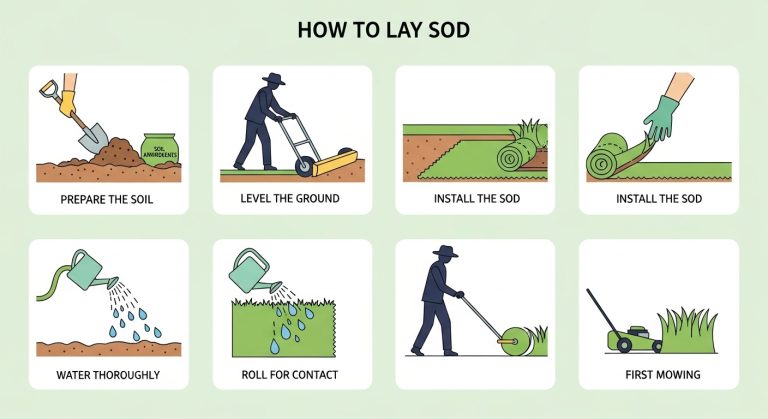How to Calculate Board Feet: A Complete Guide to Lumber Measurement

Key Takeaways
- Understanding board feet is essential for accurate lumber measurements in woodworking and construction.
- Using reliable calculations helps avoid overbuying materials and minimizes project delays.
- Online calculators can streamline the measurement process, saving time and reducing errors.
Understanding Lumber Measurements
To effectively measure lumber, you need to be familiar with three basic dimensions:
- Length: Measured in feet (ft).
- Width: Measured in inches (in).
- Thickness: Also measured in inches (in).
What is a Board Foot?
A board foot is a unit of volume used to measure lumber, defined as the volume of a board that is 12 inches long, 12 inches wide, and 1 inch thick, which is equivalent to 144 cubic inches. Understanding board feet is vital for both woodworking and construction, as it helps you estimate material quantities and costs effectively.
Here are some common applications that require board feet calculations:
- Flooring
- Decking
- Framing
- Cabinetry
Board Feet Formula
To calculate board feet, you can use a simple formula:
Board feet = (Length (feet) x Width (inches) x Thickness (inches)) / 12
Why do we use this formula? It’s essential that the length be in feet while the width and thickness must be in inches to ensure that we maintain consistent units throughout the calculation.
Example Calculation
Let’s go through a detailed example calculation:
- Given: A board that is 8 feet long, 6 inches wide, and 2 inches thick.
Using the formula:Board feet = (8 x 6 x 2) / 12Board feet = 96 / 12 = 8 board feet
Common Errors to Avoid
- Mixing different measurement units (e.g., using inches for length).
- Misplacing dimensions in the formula.
- Forgetting to convert inches to feet correctly when necessary.
Using a Board Feet Calculator
For quick and accurate lumber calculations, online board feet calculators are incredibly useful. These calculators allow you to input your measurements, and they will take care of the math for you without the need for manual calculations.
Benefits of Using Calculators
- Time-Saving: Quickly calculate board feet without manual math.
- Error Reduction: Minimize chances of making mistakes, especially when dealing with multiple boards or irregular sizes.
- Convenience: Ideal for large projects where many different cuts are involved.
Using a calculator is particularly beneficial for large projects or when you’re dealing with complex lumber sizes.
Lumber Measurement Tips for Accurate Board Feet Calculation
To ensure accuracy in your board feet calculations, here are some best practices to consider:
- Use a Reliable Measuring Tool: Always have a good tape measure or ruler on hand.
- Standard Measurements: Measure length in feet, while width and thickness should remain in inches.
- Take Multiple Measurements: If a board isn’t uniform, measure multiple points and use the average.
- Double-Check Conversions: Be careful if you’re alternating between metric and imperial systems.
- Precision Tools: Investing in tools like calipers or lumber tapes can make a significant difference when exact thickness is critical.
Frequent Mistakes to Avoid
- Mixing metric and imperial systems.
- Confusing width or thickness when expressing units.
- Not accounting for differences between rough-sawn and finished lumber thickness.
Applications of Board Feet Calculations
Understanding board feet can significantly enhance your project planning. Here’s how these calculations assist in:
- Estimating Lumber Needs: Determine the exact amount required for projects like flooring, decking, framing, and cabinetry.
- Budgeting Materials: Since lumber is often priced per board foot, using this measurement allows for precise budgeting and cost forecasting.
- Managing Inventory: Suppliers benefit from board feet calculations by ensuring accurate stock counts and efficient inventory management.
Advanced Board Feet Calculations
When it comes to more complex projects, knowing the basic board feet formula is just the beginning. Here are some considerations to keep in mind:
Total Board Feet for Multiple Boards
When calculating total board feet for several boards, sum the individual board feet amounts of each board to get a comprehensive total.
Measuring Irregular or Custom-Shaped Lumber
For boards that aren’t standard shapes, you can break them down into rectangular sections. Calculate the volume of each section and sum these to get the total volume, or use specialized calculators designed for irregular lumber situations.
Accounting for Lumber Grades and Conditions
When working with different lumber grades, species, or conditions, it’s prudent to include waste factors and yield percentages to estimate usable board feet accurately. This ensures you order enough without overestimating.
Conclusion
In summary, knowing how to calculate board feet is essential for anyone involved in woodworking or construction. Accurate measurements and unit consistency are paramount for ensuring project success and managing costs effectively. Utilizing online board feet calculators can save you time and reduce errors significantly.
As you embark on your next project, remember that a strong understanding of and ability to calculate board feet will contribute directly to your overall efficiency and effectiveness.
Additional Resources
Here are some recommended online board feet calculators to help you in your future projects:
Consider looking for tutorials or guides that can deepen your knowledge further, such as step-by-step measurement videos or printable dimension charts. Bookmarked tools will be invaluable as you take on new and challenging projects in woodworking and construction.
FAQ
Q: What is the best way to calculate board feet?
A: Use the formula: Board feet = (Length (feet) x Width (inches) x Thickness (inches)) / 12.
Q: Can I use a standard calculator?
A: Yes, but for convenience and accuracy, online board feet calculators are recommended.
Q: Why is knowing board feet important?
A: It helps estimate lumber costs and is essential for effective project planning and material management.






